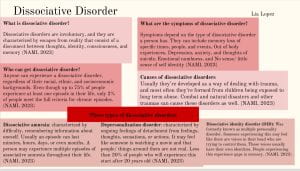The topic of gender diversity and how we can make students of all genders feel accepted and safe is something that should be discussed more, especially in schools. There are so many resources that can guide us in how to help students, and anybody, feel safe in expressing their gender and being their true self.
What is gender identity? Gender identity is how an individual identifies their own gender as. Do they identify as a male, female, nonbinary, etc? (American Psychological Association, 2021). Gender diverse students often don’t feel safe at school, and it can have an effect on their experience as early as elementary school. People have been attacked for their gender identity and sexuality, both physically and verbally/ emotionally. In The Laramie Project, the case of Matthew Shepard is documented. Matthew Shepard was a university student who was brutally attacked because of his sexuality. Even after death, he was shamed for his sexuality. Cases like these are part of the reason why LGBTQ youth do not always feel safe in schools, and sometimes at home or just in their community. We need to help protect LGBTQ youth, educate everyone on the issues they face, and change the way they’re treated.
The Trevor Project is a non profit organization that provides support for young LGBTQ people, and is a great way to get informed on LGBTQ facts and topics. They have so many resources that help LGBTQ youth, and they recently did a study on the mental health of LGBTQ young people. They found that 41% of LGBTQ young people considered attempting suicide in the past year, and 56% of LGBTQ young people who wanted mental health care in the past year were unable to get it (The Trevor Project, 2023). If we can do a better job in supporting our LGBTQ youth, we can get those numbers down and help young people of all gender identities feel supported. Of the 41% of LGBTQ youth that seriously considered attempting suicide, young people who are transgender, nonbinary, and/or people of color reported higher rates. Showing people of color that they are accepted is also an issue that needs to be addressed, because racism is a prevalent issue all throughout America, and in many schools. There are resources on the Child Mind Institute that can help us address racism with children, and show us how to have the difficult discussions that need to be had in order to spread awareness.
We, as teachers, can do multiple things to show support for out LGTBQ youth in schools. One thing we can do that seems simple, but can show that we are supportive and accepting, is asking students their pronouns. We can normalize sharing pronouns by sharing our own and encouraging everyone, even cisgender students, to share their pronouns. This creates a safe space for our students. We can also include LGBTQ representation in our lessons, even by simply referencing gender diverse people in history and recognizing impact. It’s important to support our gender diverse students, as well as all gender diverse people we know. They face many struggles and we can help get them through it and help create a more supportive environment and future for them.
References:
Kaufman, M. (Director). (2002). The laramie project [film]. Good Machine, HBO Films.
The Trevor Project. (2023). 2023 National Survey on LGBTQ Mental Health. https://www.thetrevorproject.org/survey-2023/
Hameed , K., Howard, J., & Domingues, J. (2023, November 6). Talking to kids about racism and violence. Child Mind Institute. https://childmind.org/article/racism-and-violence-how-to-help-kids-handle-the-news/
Students Exploring Gender Identity (2021, October). American Psychological Association. https://www.apa.org/ed/schools/primer/gender-identity
Teachers College, Columbia University. (2022, October 24). 5 ways educators can help support LGBTQ+ students. Teachers College – Columbia University. https://www.tc.columbia.edu/articles/2022/october/5-ways-educators-can-help-support-lgbtq-students/
